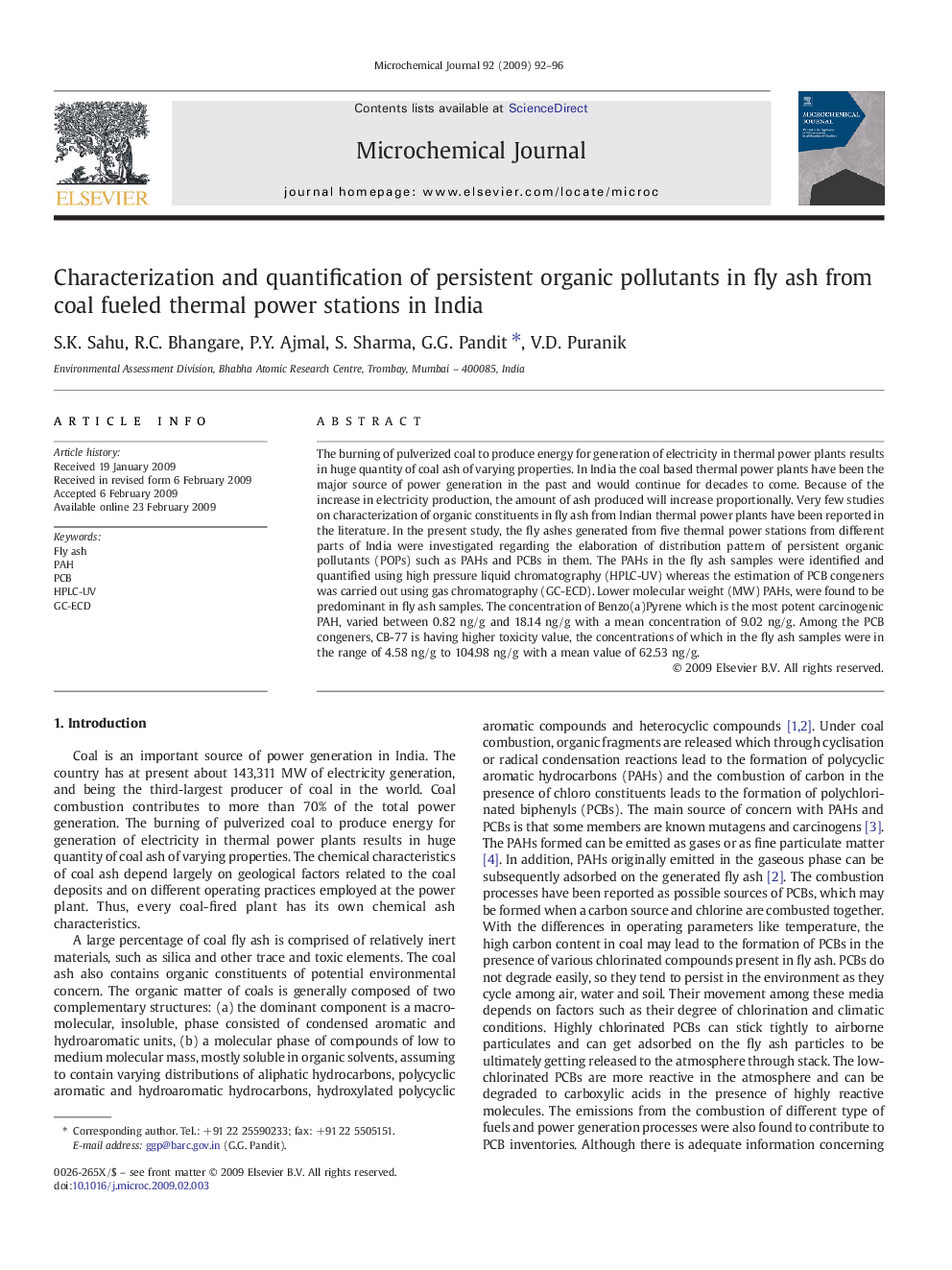| Article ID | Journal | Published Year | Pages | File Type |
|---|---|---|---|---|
| 1228569 | Microchemical Journal | 2009 | 5 Pages |
The burning of pulverized coal to produce energy for generation of electricity in thermal power plants results in huge quantity of coal ash of varying properties. In India the coal based thermal power plants have been the major source of power generation in the past and would continue for decades to come. Because of the increase in electricity production, the amount of ash produced will increase proportionally. Very few studies on characterization of organic constituents in fly ash from Indian thermal power plants have been reported in the literature. In the present study, the fly ashes generated from five thermal power stations from different parts of India were investigated regarding the elaboration of distribution pattern of persistent organic pollutants (POPs) such as PAHs and PCBs in them. The PAHs in the fly ash samples were identified and quantified using high pressure liquid chromatography (HPLC-UV) whereas the estimation of PCB congeners was carried out using gas chromatography (GC-ECD). Lower molecular weight (MW) PAHs, were found to be predominant in fly ash samples. The concentration of Benzo(a)Pyrene which is the most potent carcinogenic PAH, varied between 0.82 ng/g and 18.14 ng/g with a mean concentration of 9.02 ng/g. Among the PCB congeners, CB-77 is having higher toxicity value, the concentrations of which in the fly ash samples were in the range of 4.58 ng/g to 104.98 ng/g with a mean value of 62.53 ng/g.
